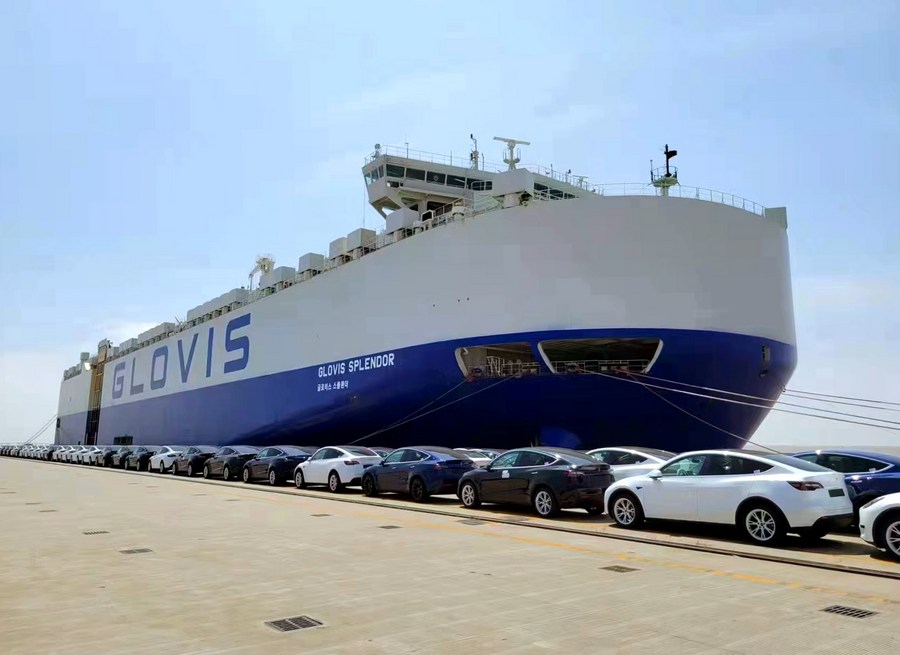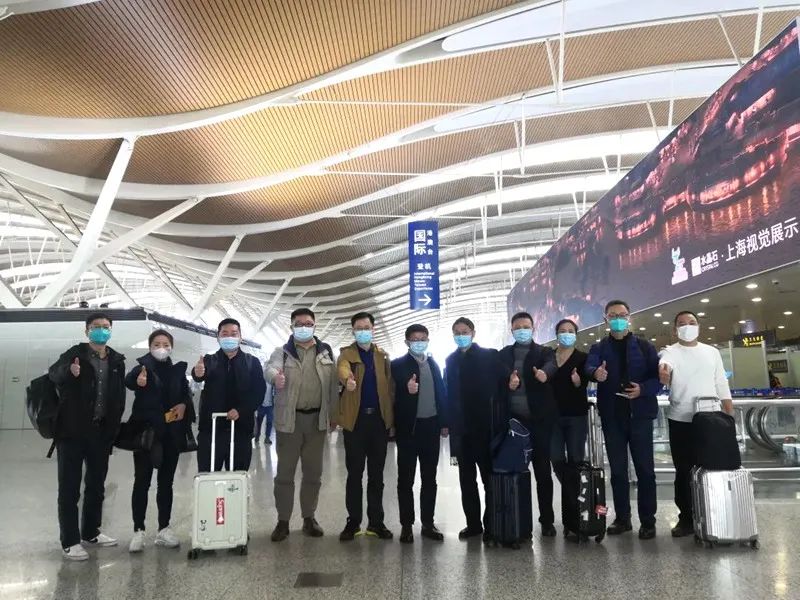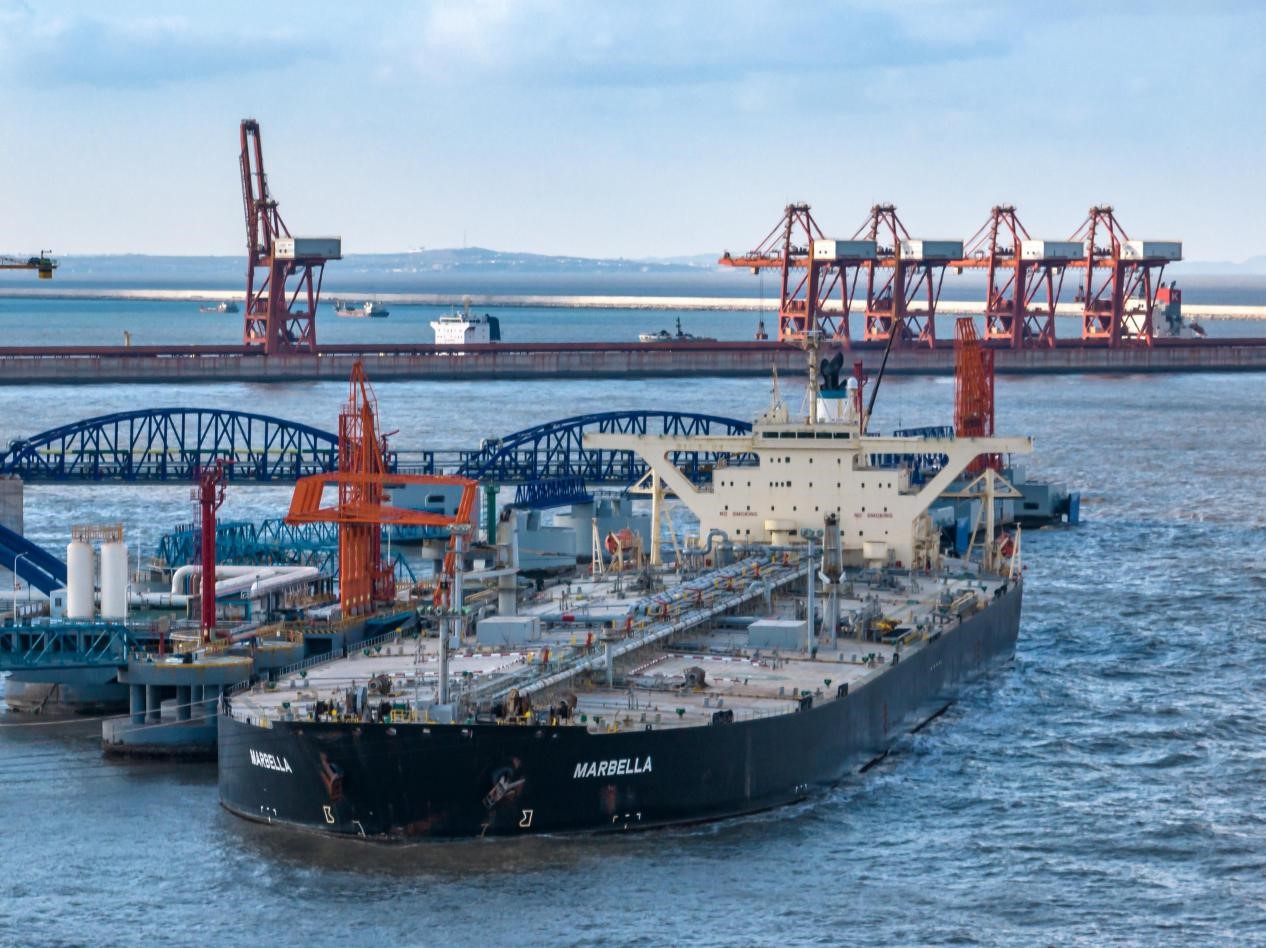How China has secured economic stability in 2022

A ship is loaded with electric cars produced by U.S. automaker Tesla's Shanghai Gigafactory, before leaving for Slovenia from a port in east China's Shanghai, May 11, 2022. (Photo/Xinhua)
Despite a complex and grim external environment and the triple pressures of shrinking demand, disrupted supply, and weakening expectations, China’s economic output is expected to expand to over 120 trillion yuan ($17.2 trillion) in 2022.
During this year, the country has made great efforts to buy back the time lost to the COVID-19 pandemic and offset the impacts of the pandemic on the economy.
Getting orders from overseas markets
Many provinces across the country, including Zhejiang, Guangdong, Sichuan, Jiangsu, Fujian and Hainan, have arranged chartered flights to help companies gain orders from overseas markets.
The efforts have been proven very effective. The city of Suzhou, in east China’s Jiangsu Province, organized a business trip to Japan, which helped foreign trade companies secure more than 1 billion yuan worth of new orders. Following that, the city arranged another trip to Europe for its foreign trade companies.

Members of a business delegation from Ningbo city, east China’s Zhejiang Province, heading for the United Arab Emirates pose for a group photo. (Photo courtesy of the Ningbo Municipal Bureau of Commerce)
Ningbo, a city in east China’s Zhejiang Province, arranged eight chartered flights in two batches for foreign-trade orders, benefiting a cumulative total of 600 people and bringing in orders worth about $2 billion.
“As the COVID-19 policy is continuously optimized, we believe it’s time for companies to go to the global markets to do business,” said an official of the Department of Commerce of Zhejiang Province.
These orders have made it possible for China’s foreign trade to tide over the difficult time. Against the backdrop of mounting downward pressure on the global economy and weakening driving force for global trade, China’s foreign trade grew 8.6 percent year-on-year in the first 11 months of 2022, with exports registering a year-on-year increase of 11.9 percent during the period.
Rolling out pro-employment policies
Since the second quarter of this year, increasing downward pressure on the Chinese economy has added to the pain of many market entities. In an effort to stabilize the economy, China’s State Council rolled out 33 measures and a slew of follow-up policies.
Within this year, the country cut the reserve requirement ratio for eligible financial institutions by 0.25 percentage points twice, releasing a total of more than 1 trillion yuan in long-term funds through the cut.
The country has refunded value-added tax (VAT) credits worth about 2.4 trillion yuan this year, the largest-scale in history. The country’s tax refunds, as well as tax and fee cuts and deferrals, are expected to top 4 trillion yuan in 2022.
In addition, premium payments of old-age insurance, unemployment insurance, and workplace injury insurance were deferred for many industries. Micro, small, and medium-sized enterprises have received refunds of up to 90 percent of the unemployment insurance premiums they paid in the previous year. The ratio for large companies has been increased to 50 percent.
Data released by China’s Ministry of Human Resources and Social Security showed that the country created 11.45 million new urban jobs between January and November this year, over-fulfilling the annual target of creating 11 million urban jobs in 2022.
Major economically developed provinces play a leading role in stabilizing economy
China’s top 10 provincial-level regions in terms of GDP, namely Guangdong, Jiangsu, Shandong, Zhejiang, Henan, Sichuan, Hubei, Fujian, Hunan, and Shanghai, have set annual targets and taken practical actions to promote economic development.

Cargos are unloaded from an oil tanker at a crude oil terminal of the Yantai Port in east China's Shandong province, Dec. 18, 2022. (People's Daily Online/Zhang Chao)
Southwest China’s Sichuan Province has asked governments at all levels to go all out in order to succeed in all aspects in the second half of the year and complete all targets and tasks set for the year. In particular, the province is striving to make sure the growth rate of its GDP is 1 percentage point higher than the national average this year.
Zhejiang Province is geared up to launch a major program for expanding effective investment, starting a new wave of major project construction.
Boosting confidence in resuming work and normal life
The central government has stressed shoring up market confidence on many occasions. The Political Bureau of the Communist Party of China (CPC) Central Committee has noted at multiple meetings that efforts must be made to boost the courage and confidence of officials, local authorities, enterprises, foreign companies, and the common people in seeking better development and opportunities.
Cities across the country have made efforts to restore the normal order of production and life and promote consumption. Northwest China’s Gansu Province has stressed that efforts must be made to accelerate the resumption of production and work with a sense of urgency and quickly boost market confidence so as to bring economic and social development back on track.

Citizens drink coffee at a coffee shop in Beijing’s Sanlitun on Dec. 22, 2022. (People’s Daily Online/Yu Kai)
Jiangsu issued more than 250 million yuan worth of digital consumption vouchers and digital yuan red packets; southeast China’s Fujian Province has allocated 200 million yuan for issuing consumption vouchers in various areas; and Nanshan district of Shenzhen, south China’s Guangdong Province, has issued a new round of consumption vouchers worth 200 million yuan.
“As the COVID-19 prevention and control enters a new stage, the central government will put more efforts into economic development to accelerate economic recovery and promote high-quality development,” said Feng Xuming, a researcher with the Chinese Academy of Social Sciences.
The Chinese economy is expected to see an accelerated recovery and realize a growth rate of more than 5 percent in 2023, according to Feng.
Photos
Related Stories
- Commentary: China’s economy regains vitality after going through most difficult period
- Chinese localities make bold moves to stabilize economy
- China's economy brims with vitality thanks to reform and opening-up
- Chinese economy has great resilience
- Chinese economy enjoys bright prospects
- As global economy meets headwinds, China should focus on five areas to pursue economic growth: former IMF secretary
- Chinese economy in stable recovery
- Experts: Economy still on track to steady growth
- Chinese economy reshaped by decade of phenomenal development
- Australian business leaders optimistic about Chinese market, economy
Copyright © 2022 People's Daily Online. All Rights Reserved.









